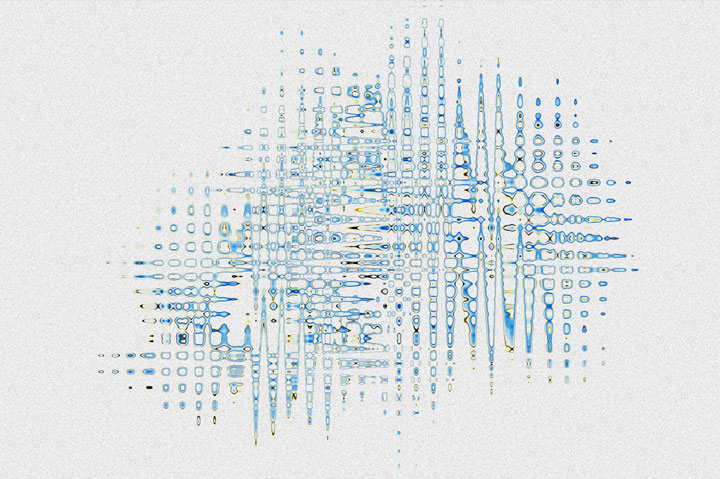Mostly, we think of sound healing as something we create, an intentional experience shaped by voice and instruments. A moment set apart from the noise of the world, a carefully curated bath of vibration and stillness.
But what about the sounds of daily life, where we eventually return after the deeply intentional space of the treatment room? The world itself is always sounding. Even in moments of apparent quiet, the low thrum of the earth, the distant hum of traffic, or the subtle resonance of our own bodies continues to vibrate.
These sounds, all sounds, have an effect on us. They shape our biology and perception.
Research shows that environmental sound directly affects our heart rate variability, stress hormones, cognitive function, and even immune response [1]. Chronic exposure to urban noise has been linked to increased risk of hypertension, anxiety, and sleep disturbances [2]. Meanwhile, natural sounds have been shown to activate the parasympathetic nervous system, the body’s rest and repair mode [3].
The concept of mapping our soundscape invites us into a conscious relationship with these ambient influences. It offers a way to listen to the world as if it, too, were part of the therapy.
What Is a Soundscape?
The term soundscape was introduced by Canadian composer and acoustic ecologist R. Murray Schafer, who described it as the “sonic environment” in which we live, composed of natural, human, and technological sounds. Schafer’s work in the 1970s contributed to initiating a whole field of study known as acoustic ecology, which explores how sound environments impact ecosystems and human wellbeing.
Soundscapes are typically divided into three categories:
- Geophony: non-biological natural sounds (e.g. wind, rain, earthquakes)
- Biophony: sounds of non-human living organisms (e.g. birds, insects, animals)
- Anthropophony: human-generated sounds (e.g. voices, vehicles, machinery)
Each environment contains a unique balance of these elements. A forest may be rich in biophony and geophony, while a city centre is dominated by anthropophony. These balances affect more than just our ears; they influence our nervous system, attention and internal rhythms [4].
In sound therapy, we often guide people inward. But what if part of our work was also to guide them outward, to develop a refined sensitivity to the sonic field they inhabit?
An Ecology of Sound
Recent studies in environmental psychology and neuroscience confirm what we all intuitively know and feel: the acoustic environment matters. One 2017 meta-analysis published in Scientific Reports showed that exposure to natural sounds significantly improved mood, reduced stress, and enhanced cognitive performance [3]. These effects were most pronounced when the sounds included water and birdsong.
Meanwhile, research on noise pollution reveals the inverse: long-term exposure to urban soundscapes correlates with elevated cortisol levels, sleep disturbance, and reduced attention span [2][5]. Even low-frequency noise (often imperceptible to our conscious mind) has measurable effects on cardiovascular health [6].
In response to growing interest in how sound shapes human and ecological systems, interdisciplinary projects have emerged. Here are two examples:
- The Sat2Sound project maps acoustic features of global landscapes using remote sensing and AI to correlate environmental data with sound features [7].
- The Soundscape Ecology Project at Purdue University tracks how changing soundscapes reflect ecosystem health and biodiversity [8].
These insights reveal something profound: we are not separate from our environments (if anyone still needs to hear that). We are permeable, vibrational beings shaped and informed by the sounds we live among.
Why This Matters for Sound Therapy
In sound therapy, we use vibration to shift inner states. But once a client leaves the treatment space, they return to their habitual soundscape, one that may be either nourishing or depleting.
Soundscape mapping offers a practical and therapeutic lens to:
- Identify chronic background stressors such as HVAC systems, traffic drones, or electronic buzz. These sounds may seem minor, but their cumulative impact can be profound—especially for sensitive individuals or those with trauma or neurodivergence.
- Locate sources of acoustic nourishment in a person’s daily environment: the rustle of trees outside a window, the distant sound of church bells or birdsong.
- Design personal rituals or sonic interventions based on these findings, such as adding a white noise machine that mimics natural sounds, using field recordings during sleep, or changing the layout of a room to reduce echo or noise exposure.
A suggestion I have for sound therapists is to experiment with incorporating personalised environmental recordings into client sessions. For instance, recordings of a quiet woodland walk or ocean waves taken by the client themselves can be used to evoke regulation and memory in later sessions. This bridges the therapeutic space with the real-life environment and helps build resilience outside the treatment room.
Try It Yourself: A Listening Ritual
Here’s a simple and potent exercise to begin mapping your own soundscape.
The Soundwalk
- Choose a route through your neighbourhood, a nearby park, or even just around your home.
- Walk slowly, allowing your hearing to guide your attention. No need to analyse, just listen.
- Pause whenever something catches your ear. Try to listen to the texture of the sound: Is it continuous or rhythmic? Sharp or soft? Dense or spacious?
- Tune into your inner response. Does this sound energise you? Ground you? Irritate or soothe?
- Optional: Record short audio clips using your phone and note down how they made you feel.
Over time, you can build a personal “sound map”: a collection of the auditory landmarks in your daily life. You might begin to notice that certain streets feel calmer than others, or that your own home contains pockets of unexpected resonance.
You can consider this a catalogue for nervous system literacy.
A New Way of Listening
Sound Healing can have different meanings. It can happen through gongs, singing bowls and overtone singing, but it can also arise from a shift in attention and through becoming more permeable to the acoustic wisdom of the environment.
When we begin to map and listen to our environment as a living field of vibration, we come into greater coherence with place, with nature, and with time.
This kind of listening fosters a respect for the effects of sound and provides us with a chance to re-weave our sonic perception into our wider healing path.
And in doing so, we remember that sometimes healing is not only something we add to the situation.
Sometimes, it is something we tune into.
References
- Kraus, N. (2021). Of Sound Mind: How Our Brain Constructs a Meaningful Sonic World. MIT Press.
- Basner, M. et al. (2014). Auditory and non-auditory effects of noise on health. The Lancet.
- Van Hedger, S. C. et al. (2019). Natural Sounds Facilitate Restorative Effects on Mood and Cognitive Performance. Scientific Reports.
- Pijanowski, B. C. et al. (2011). Soundscape Ecology: The Science of Sound in the Landscape. BioScience.
- WHO (2018). Environmental Noise Guidelines for the European Region.
- Persson Waye, K. (2004). Effects of low frequency noise on sleep. Noise & Health.
- Sat2Sound Project: https://arxiv.org/pdf/2505.13777
- The Center for Global Soundscapes, Purdue University: https://www.centerforglobalsoundscapes.org/
Check our other articles
When Sound Makes Light: Sonoluminescence at the Edge of Physics and Mystery
If you send a loud enough tone into a liquid, tiny gas bubbles can implode so violently that they flash with light. This is called sonoluminescence. In its cleanest laboratory form, a single micron-scale bubble sits in a standing acoustic wave and emits a...
Can Cells Really Hear?
Those of us working with sound in a therapeutic setting have been well aware of its profound impact on the human body. We know that sound can calm the nervous system, shift our emotions, and bring us into states of deep presence. Yet, the general view of sound is that...
Sound Therapy and Neurodivergence
The Resonant Power of Sound Healing for Neurodivergent Individuals In a world filled with sensory stimuli, neurodivergent individuals, such as those with autism spectrum disorder (ASD) or attention-deficit/hyperactivity disorder (ADHD), often experience heightened...



